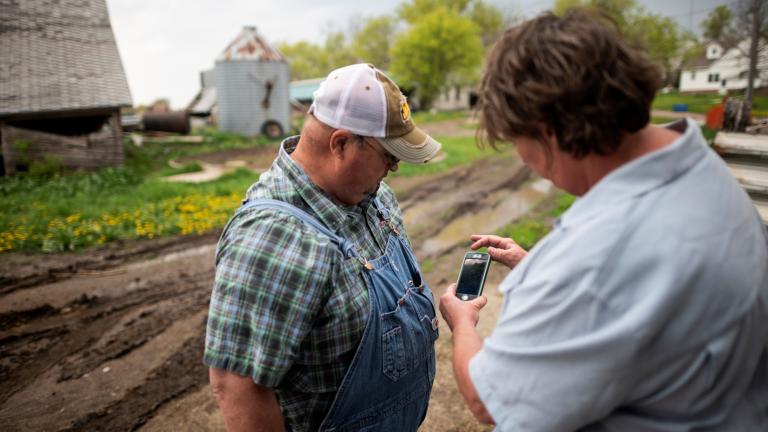Shocked by high gas prices? You’re not alone: according to the lead story in today’s Los Angeles Times, prices are at a record high.
The gravity-defying price of oil shot through another barrier Monday by briefly touching $103.95 a barrel in New York trading, the highest cost ever for black gold even after adjusting for inflation.
But the experts say it’s not so much a rise in demand that is pushing up the cost, but a fall in the value of the dollar.
“I don’t think it’s a coincidence that the price of oil hits an all-time high around the time that the dollar hits an all-time low against the euro,” said Ken Medlock, an energy studies fellow at Rice University’s Baker Institute. “The amount of dollars you have to give up for a barrel of oil is going to increase because the dollar is purchasing less and less.”
In response, according to an excellent story in Monday’s Wall Street Journal, Americans have at last began to turn against gasoline.
The WSJ headline sounds almost epochal: “Americans Start to Curb Their Thirst for Gasoline.”
It’s the biggest drop in consumption in 16 years.
Today, a weakening economy is intensifying the effects of high gasoline prices, at the same time Americans are being pinched by broader inflation. In January, consumer prices were up 4.3% from a year earlier, a 16-year high, led by sharply rising food and energy costs. Even stripping out food and energy, the so-called core inflation rate was up 2.5% from the previous year, reflecting higher costs for purchases such as education and medical care.
We are beginning to see how we must change our behavior to reduce gasoline consumption. And, according to the story, we are beginning to see how those changes could endure.
The longer gasoline prices remain high, the greater the potential consumer response. A 10% rise in gasoline prices reduces consumption by just 0.6% in the short term, but it can cut demand by about 4% if sustained over 15 or so years, according to studies compiled by the Congressional Budget Office.
As consumers make major spending decisions, such as where to live and what kind of vehicle to drive, they are beginning to factor in the cost of fuel. Some are choosing smaller cars or hybrids, or are moving closer to their jobs to cut down on driving. Those changes effectively lock in lower gasoline consumption rates for the future, regardless of the state of the economy or the level of gasoline prices.
Eventually, the price of gasoline will likely fall. Somewhat. But it hasn’t fallen below $2.70 a gallon since Katrina, according to the EIA, and the experts say the cost of driving will continue to climb this year. This news came as a big surprise to the prez last week.
“That’s interesting … I hadn’t heard that,” Bush said.
The former oilman then promised to veto a House bill to trim $18 billion in tax breaks to the oil industry.
To be fair to the president, this expectation of a continued steady rise in gas prices is new to the industry. Back in 2004 Daniel Yergin, an oft-quoted expert on this subject who leads an energy think tank in Cambridge, Mass., predicted that prices would have fallen to the $38 range by now. In a story written under his influence, a business writer for Forbes painted a gee-whiz picture of the promised solution:
Answer: capitalism’s amazing resiliency. Oil prices rise — oilmen become innovative. They work, they invest, they put their heads to the task, they apply technology, and pretty soon they’ll discover how to extract oil profitably from oil sand. Or open wells in deeper water. Or scour the planet for new sources using scanners thousands of miles in space.
Hmmm … the oil industry will use scanners in space to solve our energy problems.
Well, until that blessed day arrives, here’s a tip of the hat to one of the people who aren’t waiting for the oil industry, and are already looking for solutions down here on earth.
Anne Heedt, of Clovis, Calif., has been moving toward a more fuel-efficient lifestyle for the past few years. She owns a Toyota Prius hybrid but takes her bike on errands when weather permits.
“We’re not always going to have the same accessibility to gasoline that we’ve had in past decades, so we do have to start thinking about what we’re going to do over the next 50 years,” said the 31-year-old Ms. Heedt, who used to work at a medical office but is between jobs.


